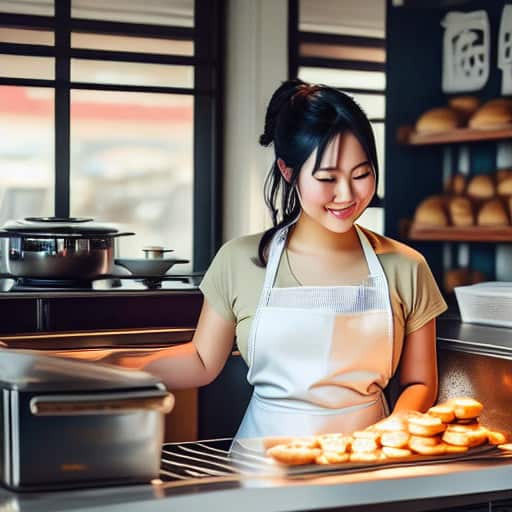
Welcome to Chefslink.org, the ultimate destination for anyone looking to master their kitchen skills! Our blog is dedicated to providing you with all of the information and techniques needed for becoming a true Master of Kitchen. We cover topics like cooking basics, recipes and ingredients as well as tips from professional chefs that will help you take your culinary knowledge to the next level. Whether you’re a beginner or an expert in cooking, we have something here that can benefit everyone who wants to improve their kitchen game – it’s easier than ever before!

Our Ethos

We believe make the love with flavor
We believe that food can be a source of love and warmth. That’s why we strive to provide our readers with the best kitchen techniques and recipes that will help you create amazing dishes full of flavor. Learn from our experts how to create delicious dishes that will bring smiles to those around you!
We believe to cook it with care
Cooking is an art and requires careful consideration. So, we believe that the best way to cook a dish is with care. In this blog, we provide readers with recipes and techniques for creating delicious dishes, as well as tips on how to make sure your food is cooked properly without compromising on flavor or nutrition. Our goal is to help you find the perfect balance between taste and health when it comes to preparing meals in your own kitchen.


We believe in improving your taste
We believe in improving your taste. We provide the latest, up-to-date and trendiest recipes or food and cooking trends so you can keep refining your culinary skills. With a variety of different recipes, you can find the perfect one for any occasion – all while learning new techniques and expanding your knowledge on how to prepare delicious meals. Let us help you take your cooking game to the next level!

Official Merchandise




Is It Good For Your Health?
What are Foods Should Boiling? The Ultimate Guide to Healthy Eating.

What Is The Healthiest Oil For Frying? 5 Best Healthies Oil For Frying

Is Smoked Food Bad For You? Best Facts About Smoking in 2023

How to Make It Right
How To Smoke a Brisket? Tips and Techniques for Mouthwatering Results in 2023

Are you ready to learn how to smoke a brisket? It’s kind of like being a cowboy and taming a wild bull – it takes patience, skill, and a whole lot of know-how. But don’t you worry, we’ll break it down nice and simple for you. Now, y’all might be wondering what a brisket is.
Well, imagine if a cow had a giant chest, that’s where you’d find a brisket…
A Simple Guide in 2023: How to Bake Cookie Dough?

The smell of freshly baked cookies is one of life’s simple pleasures. However, there are some challenges that can come with baking cookie dough from scratch…
What Is The Boiling Point Of Milk? Step-By-Step Guide to Calculating The Boiling Point Of Milk in 2023

On the other hand, milks have different characteristics which means the temperature for them to boil doesn’t necessarily reach 100°C – some may need higher temperatures than others.
Best Kitchen Supplies
What Roasting Pan For Turkey? The Best 5 Roasting Pans for Juicy & Tender Turkeys

What is the Best Food Smoker? 2023 Chefslink’s Guide

Kitchen Essentials: What Are The Best Frying Pans in 2023?

Featured Post
5 Delicious Cooking Classes to Master the Art of Cooking
Cooking classes have become increasingly popular in recent years as people look for new and exciting ways to improve their culinary skills. However, with so many options available, it can be challenging to choose the right cooking class to suit your needs. That’s where this article comes in – we’ve curated a list of five…
Continue Reading 5 Delicious Cooking Classes to Master the Art of Cooking
Mastering Knife Skills: 5 Powerful Techniques for Precision and Efficiency
Knife skills are essential in the kitchen, whether you’re a beginner or an experienced cook. Being able to chop, slice, and dice with precision and efficiency not only saves time but also improves the quality of your dishes. In this article, we’ll explore five powerful knife techniques that will take your culinary skills to the…
Continue Reading Mastering Knife Skills: 5 Powerful Techniques for Precision and Efficiency
3 Best Things You Should Not Do With Baking
Things You Should Not Do With Baking Hey fellow bakers! I’m excited to share with you some tips on Things You Should Not Do With Baking. After years of trial and error in the kitchen, I’ve learned that avoiding certain actions can actually make your baked goods turn out even better. First and foremost, let’s…
Continue Reading 3 Best Things You Should Not Do With Baking
Savor the Exquisite Delights of Modern Gastronomy: 5 Unforgettable Culinary Experiences to Tantalize Your Taste Buds!
Gastronomy is more than just food; it is an art form that delights the senses and brings people together. From exquisite fine dining to unique street food, gastronomy is a fascinating world that encompasses culture, history, and innovation. In this article, we will explore 5 unforgettable culinary experiences that will tantalize your taste buds and…
2023 Electric Frying Pan Cleaning Hack
Electric Frying Pan Hey there, fellow cooking enthusiasts! Are you tired of spending hours scrubbing your electric frying pan after every use? Well, I have some exciting news for you. Introducing the 2023 Electric Frying Pan Cleaning Hack – a revolutionary new method that will save you time and effort in cleaning your beloved kitchen…
Revolutionary Food Science Innovations: 5 Ways to Improve Your Diet Today
Food science is a multidisciplinary field that combines the principles of biology, chemistry, and engineering to study the composition, properties, and behavior of food. From food processing to food preservation, food scientists work to enhance the quality, safety, and sustainability of our food supply. In this article, we will explore five innovative food science advancements…
Continue Reading Revolutionary Food Science Innovations: 5 Ways to Improve Your Diet Today
Healthy Meal Planning: 5 Easy Steps to Achieve Your Goals
Meal planning is the process of deciding what meals you’ll be eating for a certain period, usually for a week. It’s a crucial part of a healthy lifestyle because it can help you stay on track with your nutrition goals, save time and money, and reduce food waste. However, meal planning can be overwhelming, especially…
Continue Reading Healthy Meal Planning: 5 Easy Steps to Achieve Your Goals
Creative Recipe Development: 5 Powerful Tips to Elevate Your Culinary Creations
As a chef or home cook, you’re always looking for ways to enhance the flavors, textures, and presentation of your dishes. Recipe development is an art that requires patience, creativity, and experimentation. It involves combining ingredients, techniques, and flavors to create new and exciting dishes that will tantalize your taste buds. In this article, we’ll…
Continue Reading Creative Recipe Development: 5 Powerful Tips to Elevate Your Culinary Creations
Mastering Essential Kitchen Skills: 5 Key Steps for Culinary Success
Aspiring chefs and home cooks alike can benefit from honing their kitchen skills. From basic knife techniques to more complex cooking methods, mastering these skills can lead to culinary success and greater enjoyment in the kitchen. In this article, we will explore five key steps to help you become a kitchen pro. Kitchen Skills Step…
Continue Reading Mastering Essential Kitchen Skills: 5 Key Steps for Culinary Success
5 Delicious Culinary Arts Recipes Can Transform Your Life
Culinary arts have become a global phenomenon with millions of people indulging in food and cooking activities. With the evolution of culinary arts, chefs worldwide are creating new, unique, and exotic dishes. However, cooking is not just about preparing food; it is an art that requires skill, passion, and creativity. In this article, we will…
Continue Reading 5 Delicious Culinary Arts Recipes Can Transform Your Life
Latest Post
- 5 Delicious Cooking Classes to Master the Art of Cooking
- Mastering Knife Skills: 5 Powerful Techniques for Precision and Efficiency
- 3 Best Things You Should Not Do With Baking
- Savor the Exquisite Delights of Modern Gastronomy: 5 Unforgettable Culinary Experiences to Tantalize Your Taste Buds!
- 2023 Electric Frying Pan Cleaning Hack



